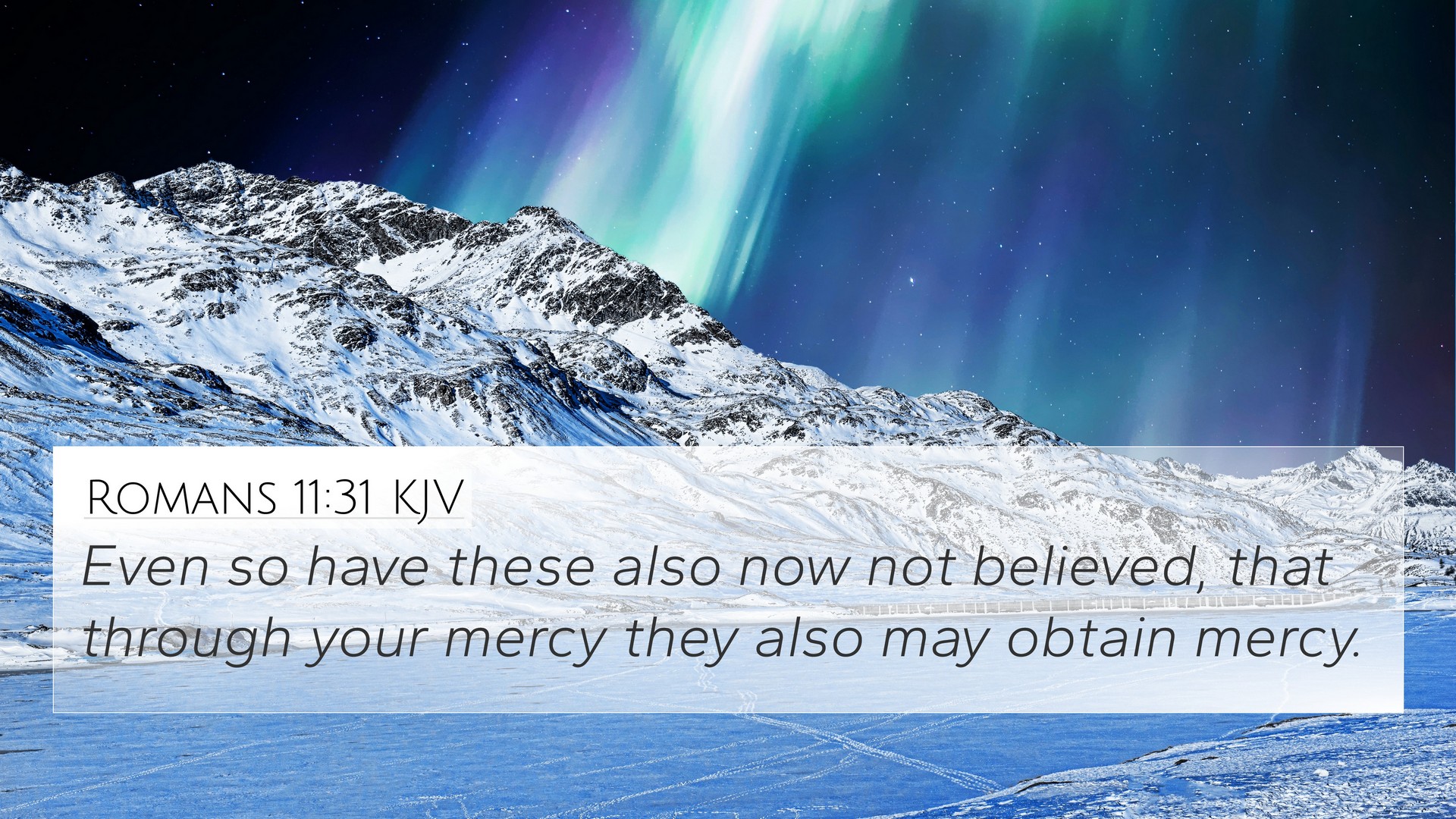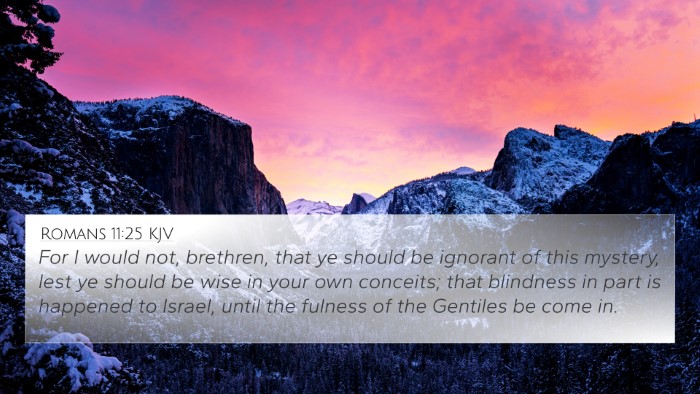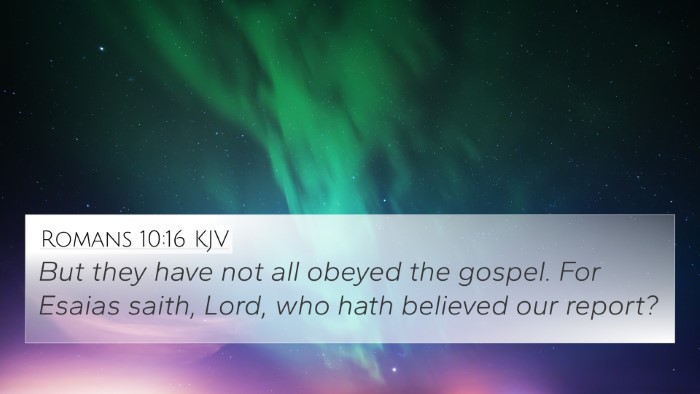Understanding Romans 11:31
Verse: Romans 11:31 - "Even so these also now not believing, that through your mercy they also may obtain mercy."
Summary of Insights
This verse encapsulates the Apostle Paul's discourse on the dynamics of faith, mercy, and salvation extended to both Jews and Gentiles. It reflects on how the mercy shown to one group can serve as a conduit for mercy to the other.
Commentary Insights
- Matthew Henry: Henry emphasizes the idea that the 'disobedience' of the Jews led to the opening of the door for Gentiles to receive mercy. This in turn serves as a reminder that God's grace operates on principles of justice and mercy, where unbelief of one group does not diminish the love of God for another.
- Albert Barnes: Barnes draws attention to the necessity of mercy in the overarching narrative of salvation history. He identifies the flow of mercy from Gentiles back to Jews, demonstrating how the mercy shown to Gentiles results in opportunities for the Jews to believe and ultimately receive mercy themselves.
- Adam Clarke: Clarke discusses the theological implications of this verse, stressing that the mercy of God works in cycles. The rejection by the Jews creates a chance for Gentiles, and vice versa, indicating the interconnectedness of humanity within God’s plan of salvation.
Cross-References and Thematic Connections
To fully grasp the meaning of Romans 11:31, one must explore its connections with other biblical texts. Below are several vital cross-referenced verses that enhance its understanding:
- Romans 9:30: "What shall we say then? That the Gentiles, which followed not after righteousness, have attained to righteousness, even the righteousness which is of faith."
- Romans 10:21: "But to Israel he saith, All day long I have stretched forth my hands unto a disobedient and gainsaying people."
- Galatians 3:26-29: "For ye are all the children of God by faith in Christ Jesus. And if ye be Christ's, then are ye Abraham's seed, and heirs according to the promise."
- Ephesians 2:12-13: "That at that time ye were without Christ, being aliens from the commonwealth of Israel, and strangers from the covenants of promise, having no hope, and without God in the world: But now in Christ Jesus ye who sometimes were far off are made nigh by the blood of Christ."
- Matthew 23:37: "O Jerusalem, Jerusalem, thou that killest the prophets, and stonest them which are sent unto thee, how often would I have gathered thy children together, even as a hen gathereth her chickens under her wings, and ye would not!"
- 1 Timothy 2:4: "Who will have all men to be saved, and to come unto the knowledge of the truth."
- Titus 3:5: "Not by works of righteousness which we have done, but according to his mercy he saved us, by the washing of regeneration, and renewing of the Holy Ghost."
Exploring Themes
Several key themes arise from Romans 11:31:
- Mercy: The concept of mercy serves as the foundation for understanding the relationship between faith and grace.
- Unbelief and Belief: This juxtaposes those who have faith against those who have rejected it, highlighting God’s sovereignty in salvation.
- Divine Plan: The verse speaks to the overarching plan of God that includes both Jews and Gentiles in the narrative of redemption.
- Interconnectedness of Believers: The mutual influence of faith between different groups (Jew and Gentile) illustrates the universal nature of the Gospel.
Practical Applications
When considering Romans 11:31, believers can derive practical applications such as:
- Understanding the importance of showing mercy to others, reflecting the mercy that they themselves have received.
- Recognizing the sovereign hand of God in the unfolding drama of salvation history.
- Being encouraged to engage in evangelism by understanding that God’s grace is capable of reaching all people.
- Realizing the significance of unity among believers from different backgrounds and experiences as part of God's family.
Conclusion
Romans 11:31 invites readers to reflect on the profound connections between mercy, belief, and God's divine purpose. Through robust cross-referencing with scriptural texts, one can appreciate how this solitary verse acts as a rich tapestry interwoven into the bigger narrative of the Bible.





